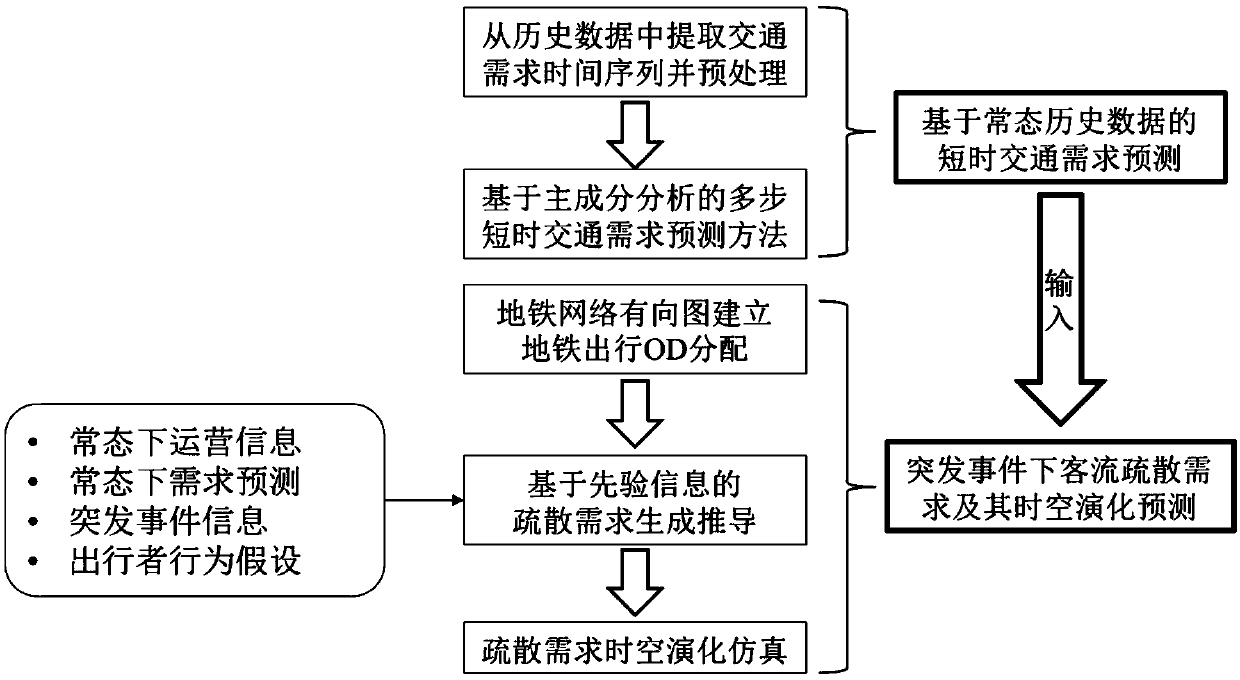Rail traffic passenger flow evacuation demand prediction method under sudden events
A technology for rail transit and emergencies, applied in forecasting, special data processing applications, instruments, etc., to achieve the effect of simple algorithm, complete method and high calculation efficiency
- Summary
- Abstract
- Description
- Claims
- Application Information
AI Technical Summary
Problems solved by technology
Method used
Image
Examples
Embodiment 1
[0133] Example background: Using the real network information and operation data of Shanghai rail transit as input, it is assumed that rail transit stations 39, 40, 41, and 42 are interrupted by an emergency. The emergency occurs at 8:00 in the morning peak and lasts for 30 minute. The algorithm of the present invention is used to predict the evacuation demand of the whole network under the emergency, and the results obtained are as follows Figure 5 as shown, Figure 5 The generation, accumulation and dissipation curves of evacuation demand at the main stranded sites of the whole network are depicted in this scenario. The peak retention value and the end of retention time are marked in the figure.
[0134] From Figure 5 It can be seen from the figure that after an emergency, the detention is more serious, that is, the most intensive evacuation needs include the terminal stations (stations 12, 43, 117, 219), the interruption stations themselves (stations 39, 41, 42), and t...
Embodiment 2
[0136] Example background: Using the real network information and operation data of Shanghai rail transit as input, it is assumed that the rail transit stations 39, 40, 41, and 42 are interrupted under an emergency, and the emergency occurs at 12:00 during the off-peak period, and the duration 30 minutes. The algorithm of the present invention is used to predict the evacuation demand of the whole network under the emergency, and the results obtained are as follows Figure 6 as shown, Figure 6 The generation, accumulation and dissipation curves of evacuation demand at the main stranded sites of the whole network are depicted in this scenario. The peak retention value and the end of retention time are marked in the figure.
[0137] From Figure 6 It can be seen from the figure that after an emergency, the detention is more serious, that is, the terminal stations (stations 12, 43, 117, 88, 204) with the highest intensity of evacuation demand, followed by the interrupted stati...
PUM
 Login to View More
Login to View More Abstract
Description
Claims
Application Information
 Login to View More
Login to View More - R&D
- Intellectual Property
- Life Sciences
- Materials
- Tech Scout
- Unparalleled Data Quality
- Higher Quality Content
- 60% Fewer Hallucinations
Browse by: Latest US Patents, China's latest patents, Technical Efficacy Thesaurus, Application Domain, Technology Topic, Popular Technical Reports.
© 2025 PatSnap. All rights reserved.Legal|Privacy policy|Modern Slavery Act Transparency Statement|Sitemap|About US| Contact US: help@patsnap.com



